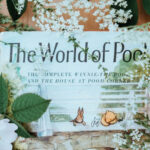
Korean architecture has an extensive history and beauty that has been preserved for centuries. Wood has been the crucial material for Korean architecture as trees like pines have been abundantly produced in Korea’s many regions. Due to Korea’s continental climate, Korean architecture has been developed with cold-resistant construction. The key characteristic of Korean architecture can be described as the structure that has been constructed along with the particular region’s geographic condition.
From the traditional house, hanok, to modern residential buildings in Korea, these books will introduce Korean architecture’s exquisite beauty with historical and aesthetic insights.
Hanok: The Korean House by Nani Park and Robert J. Fouser
The authors of Hanok: The Korean House explore the surging popularity of traditional Korean houses nowadays. Both culturally and economically, Korea is transforming day by day, and the hanok has also been modernized in terms of its role for the modern days of Korea. The book highlights twelve hanok that reflect the role the recent day’s hanok has, including renovated and traditional ones. The beautiful photography with exquisite details of hanok is something you do not want to miss.
Korea Style by Kim Unsoo and Marcia Iwatate
As unique as hanok, contemporary Korean architecture is unprecedented. The authors disclose Korea’s own modern architectural aesthetics that the nation has developed despite Western and surrounding Asian countries’ influence. The book also highlights both architecture and interior design of twenty-two places of different styles. If you are ready to experience the pure beauty of Korean architecture, this book is for you.
The Secret Spirit of Korean Architecture by Kim Bongryol
This book is an edited compilation of the author’s original written works in Korean. Kim examines the historical architecture in Korea with visual art, art history, and history in general. He also reveals some behind-the-scenes details during the buildings’ development phase, which are not widely known. To share the celebratory remarks of Korean architecture, the author invites readers to contemplate and appreciate Korean architecture in the context of history and society.
Korean Architecture: Breathing with Nature by Ben Jackson and Robert Koehler
This book showcases the ten most significant traditional Korean buildings: royal palaces, Buddhist temples, shrines, gardens, and fortresses. It also introduces the underlying principles and structures behind the architecture in Korea. The authors illustrate traditional Korean architecture’s evolution with details, such as construction processes, materials, and ideologies.
Grand Royal Palaces of Korea by Yeong-hun Lee and Brian Wilson
This book will be the ultimate guide to the royal palaces in Korea with beautiful photography. The book is filled with over 200 pages of exquisite photos with a brief explanation of each palace’s cultural and historical significance.
















